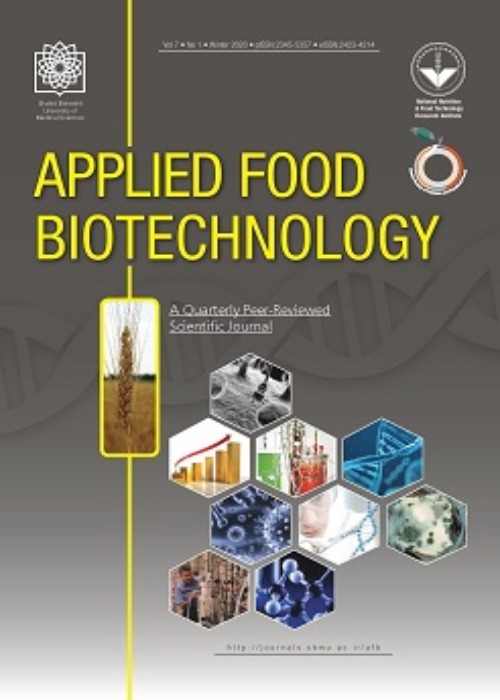Enzymatic Synthesis of Theanine in the Presence of L-glutaminase Produced by Trichoderma koningii
Author(s):
Abstract:
Background And Objective
Since ancient times, it has been said that drinking green tea brings relaxation. The substance that is responsible for a sense of relaxation is theanine. Theanine (γ-glutamylethylamide) is a unique non-protein amino acid. It gives an umami taste and a unique flavor to the tea, and has many physiological and pharmaceutical effects such as anti-tumor, anti-cancer, neuro-protective, anti-hypertensive and anti-obesity effects; it may further help in relaxation and increase focus. So this compound is essential for human body; however, it is not synthesized in the body and should be administrated orally. In the present study, the enzymatic biosynthesis of theanine was examined in the presence of Ethylamine and L-glutamine, and for the first time the enzyme was produced by the fungal strain Trichoderma koningii.Material and
Methods
At first, solid state fermentation was carried out for the production of L-glutaminase by the fungal strain Trichoderma koningii using sesamum oil cake as the solid substrate. Then the biosynthesis of theanine was performed in the presence of extracted enzyme solution, and ethylamine and L-glutamine as substrates. The concentration of effective parameters, namely L-glutamine and ethylamine, and the volume of enzyme solution on theanine production were evaluated based on the response surface methodology coupled with central composite design. 16 experiments were designed by the design expert software and carried out to examine the changes of theanine concentration with changes in the concentration of ethylamine and L-glutamine and the volume of enzyme solution.Results and
Conclusion
This investigation indicated simultaneous synthesis of theanine as well as hydrolysis of L-glutamine and L-glutamic acid. Selected independent variables (including ethylamine concentration, L-glutamine concentration and enzyme solution volume) were effective on theanine concentration. Increase of enzyme solution volume had a significant effect on theanine concentration. The highest theanine concentration (43 mM) was obtained at the ethylamine concentration of 0.9 M, L-glutamine concentration of 0.3 M and enzyme solution of 3 ml.Conflict of interest: The authors declare no conflict of interest.
Keywords:
Language:
English
Published:
applied food biotechnology, Volume:4 Issue: 2, Spring 2017
Pages:
113 to 121
magiran.com/p1681424
دانلود و مطالعه متن این مقاله با یکی از روشهای زیر امکان پذیر است:
اشتراک شخصی
با عضویت و پرداخت آنلاین حق اشتراک یکساله به مبلغ 1,390,000ريال میتوانید 70 عنوان مطلب دانلود کنید!
اشتراک سازمانی
به کتابخانه دانشگاه یا محل کار خود پیشنهاد کنید تا اشتراک سازمانی این پایگاه را برای دسترسی نامحدود همه کاربران به متن مطالب تهیه نمایند!
توجه!
- حق عضویت دریافتی صرف حمایت از نشریات عضو و نگهداری، تکمیل و توسعه مگیران میشود.
- پرداخت حق اشتراک و دانلود مقالات اجازه بازنشر آن در سایر رسانههای چاپی و دیجیتال را به کاربر نمیدهد.
In order to view content subscription is required
Personal subscription
Subscribe magiran.com for 70 € euros via PayPal and download 70 articles during a year.
Organization subscription
Please contact us to subscribe your university or library for unlimited access!


